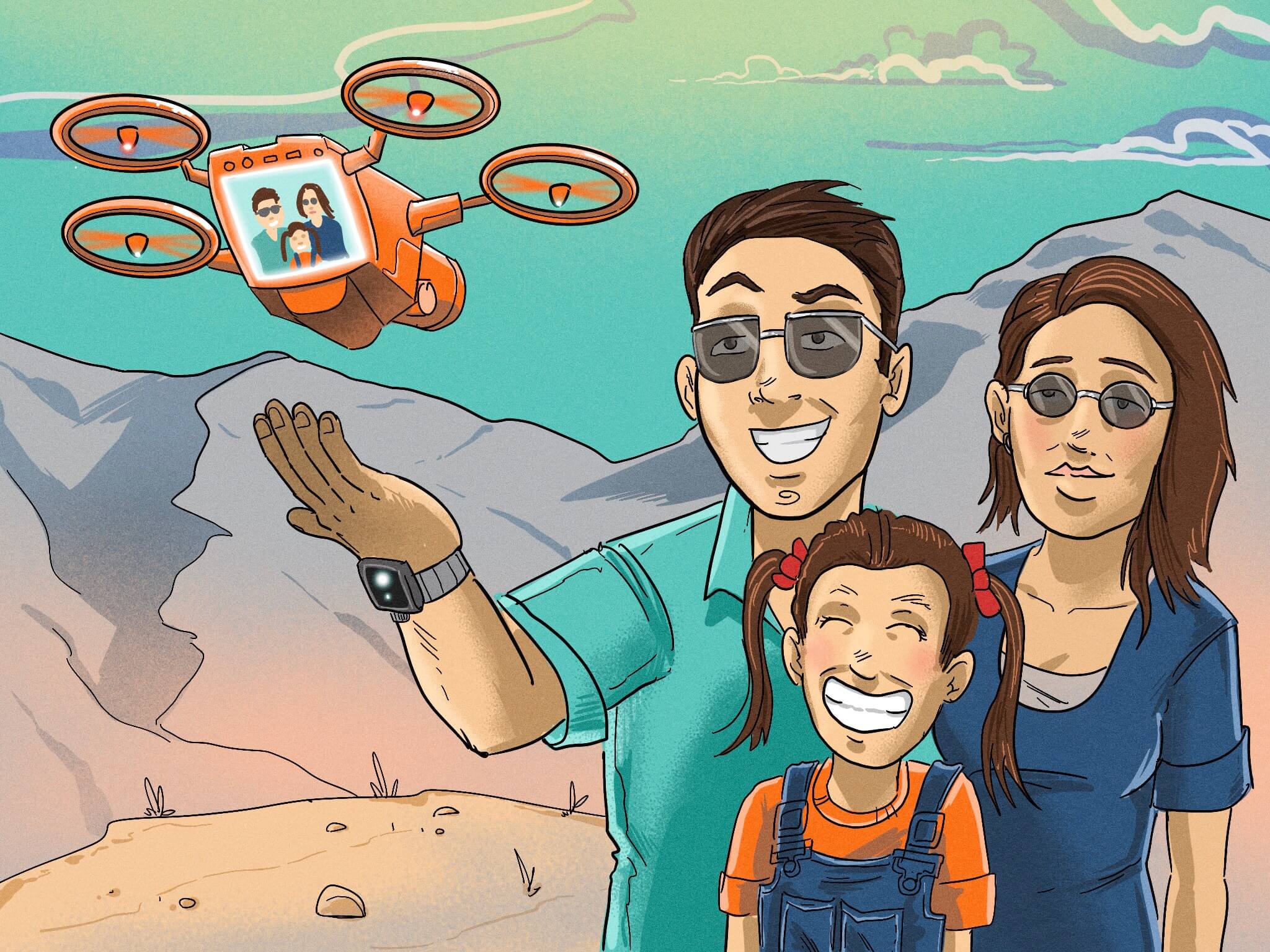Drone selfies

In the latest development of drone technology, Snap (NYSE: SNAP) has released a new selfie-taking drone called “Pixy”, being advertised as able to capture life’s magical moments, albeit with an irksome buzz. Already an established vanguard in the world of social media, Snap is taking the selfie culture to the next level with this bet. With the increase in the use of drones in society, will this be another failed endeavour or the next niche in smartphone culture?
A natural upgrade to the selfie stick, the bright yellow drone is small and light enough (weighing 101 grams) to be able to fit into most pockets. With a preset program of 6 flight modes, it takes off and lands back in the palm of your hand. Its swappable batteries boast of 5-8 flights lasting up to 10-20 seconds. The obvious advantage to this is that photos or videos from a drone can capture different types of angles in the environment, leading to more creative and better photos.
Famous for its AR (augmented reality) lenses and filters in its app Snapchat, the app is ever popular and is used by most of the younger generations. It is estimated that it is the most popular social media platform used by teenagers, followed by TikTok and Instagram (NASDAQ: FB). In 2016, Snapchat revolutionized the selfie by releasing the animated dog filter that would add a dog’s ears, nose, and tongue over faces when taking a selfie. This was followed by other beauty filters, such as ones that add makeup, beards, wrinkles, and different assortments of headwear all to augment the way we look and present ourselves. Sure enough, plastic surgeons report the rise of patients wanting procedures done to look like the way they look through their filters.
In 2017, Snap released Spectacles – sunglasses with inbuilt cameras that would be able to record short videos from a POV perspective. However, due to many factors, such as a lack of interest, poor useability, and choppy, wide focus, the company reported a $40 million loss from the venture. Not letting up, Snap doubled down on its bet on smart glasses, releasing follow-up products such as Spectacles 3, integrating AR and being able to display 3D elements and filters in real-time.
As drones are becoming more ubiquitous in society, it is no surprise we see them used in this fashion. From the origins of military use, drones have entered the public sphere as they are extremely versatile and are able to perform a wide variety of functions in many industries. As technology advances, drones are becoming more affordable, and batteries tend to last longer. They are popularly being used in photography – being the norm for real estate advertising and capturing important life events such as weddings.
So it seems like there is some merit to this business venture. However, the question remains whether the evanescent selfie culture will embrace this technology long enough or if they will scroll past it. Be that as it may, Snap is leading and innovating the selfie generation – for better or worse.
